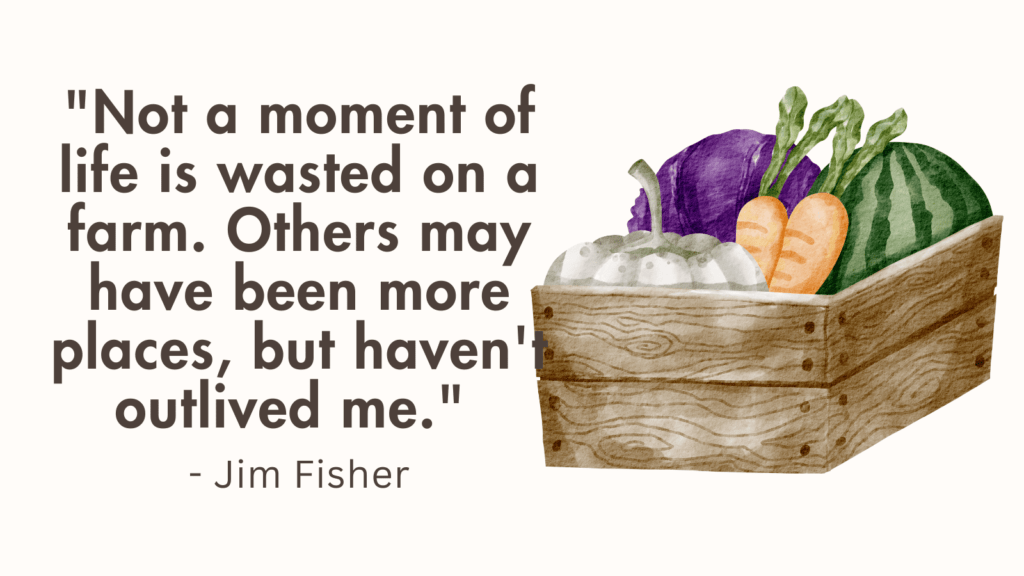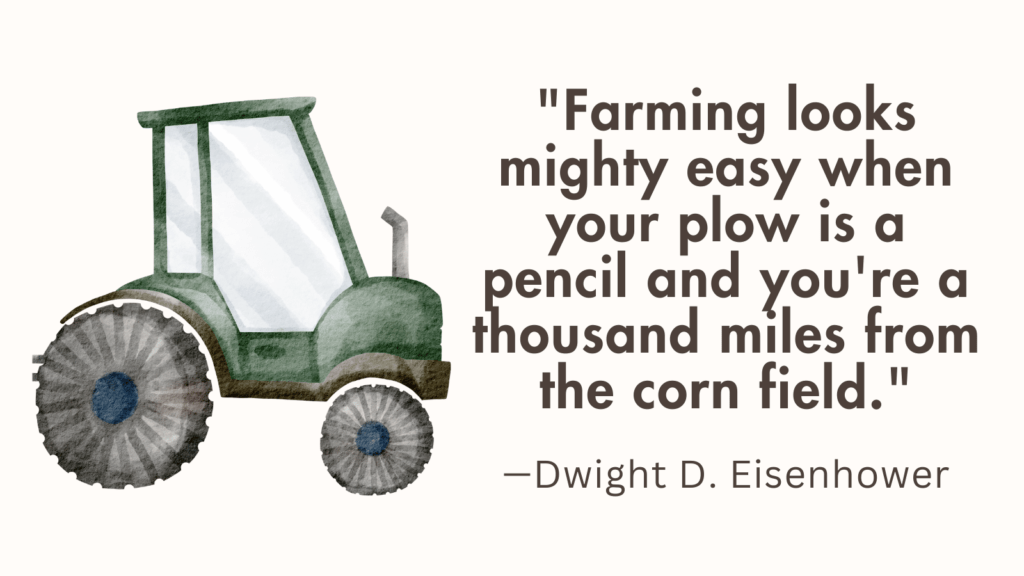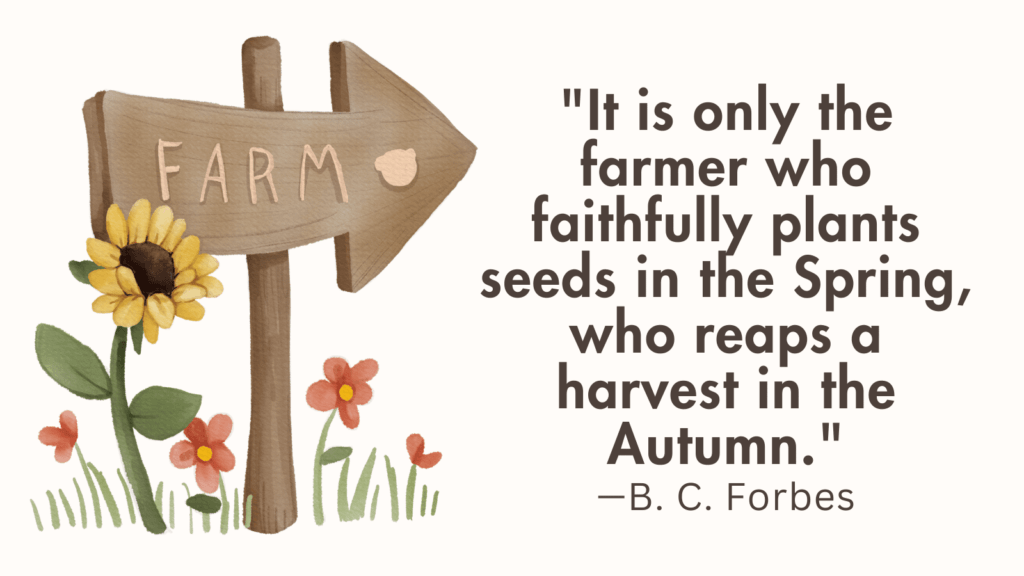In this post, you’re going to learn how to protect your watermelon farm.
Potential Threats to Watermelon Farms
Watermelon farms may face various potential threats that can negatively impact crop health and yield. Here are some common threats to consider:
1. Pests
Insects such as aphids, cucumber beetles, and squash bugs can damage watermelon plants by feeding on leaves, stems, or fruit.
Additionally, diseases like powdery mildew and fusarium wilt can also affect plant health.
2. Wildlife
Animals like deer, rabbits, raccoons, and birds are known to be attracted to watermelons.
They can cause physical damage by eating the crops or trampling the plants.
Other pests, such as moles or gophers, can also harm plants by tunneling underground.
3. Extreme weather
Watermelon plants can be vulnerable to extreme weather conditions, including heavy rains, storms, hail, or strong winds.
Excessive rainfall can cause soil erosion or lead to waterlogged conditions, which can be detrimental to plant growth.
Hailstorms or high winds can physically damage the fruit or break the vines.
4. Diseases
Various fungal, bacterial, and viral diseases can affect watermelon farms.
These can include diseases like anthracnose, downy mildew, bacterial fruit blotch, and mosaic viruses.
These diseases can spread rapidly and affect plant health, reducing yield and quality.
5. Weeds
Weed competition can significantly impact watermelon crops by competing for nutrients, water, and sunlight.
Weeds can also harbor pests or diseases that could affect watermelon plants.
6. Nutrient deficiencies or imbalances
Insufficient or excessive levels of essential nutrients can affect watermelon growth and productivity.
Nutrient deficiencies can manifest in stunted growth, yellowing leaves, or poor fruit development.
7. Improper irrigation
Inadequate or excessive watering can lead to problems such as root rot, fungal diseases, or fruit cracking.
It’s crucial to provide consistent and appropriate irrigation to maintain optimal soil moisture levels.
8. Soil quality and fertility
Poor soil health, low fertility, or imbalanced soil pH can hinder watermelon growth and limit the crop’s yield potential.
How to Protect Your Watermelon Farm?
Protecting your watermelon farm is crucial to ensure a successful and bountiful harvest. Here are some steps you can take to protect your watermelon farm:
1. Install fencing
Use sturdy fencing around your watermelon farm to keep out wildlife, such as deer or rabbits, which may damage or eat your crops.
2. Implement pest control measures
Regularly monitor your plants for signs of pests, including insects and diseases.
Use organic pest control methods whenever possible, such as introducing beneficial insects or using natural sprays.
Consult with agricultural experts to identify and address specific pest issues in your area.
3. Practice crop rotation
Rotate your watermelon crops each year to prevent the buildup of pests and diseases in the soil.
This will also help maintain soil fertility and reduce the risk of crop-specific problems.
4. Provide proper irrigation
Watermelons require consistent and adequate watering.
Use irrigation systems like drip irrigation to provide the right amount of water directly to the roots, reducing the risk of overwatering or underwatering.
Avoid excessive moisture on the leaves, as it can lead to fungal diseases.
5. Use mulch
Apply a layer of organic mulch, such as straw or compost, around the base of the watermelon plants.
Mulch helps retain moisture, suppress weeds, and regulate soil temperature, creating a favorable environment for healthy plant growth.
6. Monitor and adjust nutrient levels
Regularly test your soil to ensure it has the necessary nutrients for optimal watermelon growth.
Adjust fertilizer application accordingly, following the recommendations provided by soil testing results.
7. Protect against extreme weather conditions
Be prepared for extreme weather events, such as heavy rains, storms, or hail.
Consider using row covers or protective structures like tunnels or hoop houses to shield your plants from damage.
8. Properly space and support the plants
Allow sufficient spacing between watermelon plants to promote good air circulation and minimize the risk of diseases.
Additionally, provide adequate support, such as trellises or stakes, for sprawling vines to prevent them from sitting on the ground, which can increase the likelihood of rot or disease.
9. Implement weed control measures
Weed competition can hinder watermelon growth and reduce yield.
Regularly remove weeds manually or use appropriate weed management techniques, such as mulching or applying organic herbicides.
10. Stay informed and seek expert advice
Keep yourself updated on best practices and new advancements in watermelon farming.
Consult with local agricultural extension offices, experts, or experienced farmers for any specific challenges you may encounter in your region.
By implementing these preventive measures and addressing issues promptly, you can protect your watermelon farm and maximize your chances of a successful harvest.
Related: Does Contour Farming Work Everywhere?
FAQ
How do I start a watermelon farm?
Starting a watermelon farm involves several key steps:
– Select a suitable location with access to sunlight, fertile soil, and adequate drainage.
– Prepare the soil by removing weeds, tilling, and adding organic matter or compost for improved fertility.
– Choose the appropriate watermelon varieties based on your climate, market demands, and personal preferences.
– Plant the seeds or seedlings at the right time, ensuring proper spacing and depth.
– Implement good cultural practices like regular watering, fertilizing, pest control, and weed management.
– Regularly monitor plant health, address issues promptly, and harvest the watermelons when they reach maturity.
What is the ideal climate for growing watermelons?
Watermelons thrive in warm climates with long, hot summers. They require temperatures between 70°F and 90°F (21°C to 32°C) for optimal growth.
Generally, a frost-free growing season of 80 to 100 days is ideal for watermelon cultivation.
How often should watermelons be watered?
Watermelon plants require consistent moisture, especially during their growing and fruiting stages.
They typically need about 1 to 2 inches (2.5 to 5 cm) of water per week. However, this can vary based on factors such as weather conditions, soil type, and plant development.
It’s important to ensure that the soil is evenly moist but not waterlogged.
Regularly check the soil moisture by inserting your finger about an inch into the soil, and water when it feels dry at that depth.
When is the best time to plant watermelon seeds?
The best time to plant watermelon seeds depends on your local climate and the specific variety you are growing.
In general, watermelons are warm-season crops and should be planted after the threat of frost has passed and soil temperatures have warmed up.
This is typically in late spring or early summer.
You can also start seeds indoors a few weeks before the last expected frost date and transplant them outdoors when the conditions are favorable.
How much space do watermelon plants need to grow?
Watermelon plants require ample space for their vines to spread and grow.
The exact spacing depends on the variety being grown, but a general guideline is to provide about 6 to 8 feet (1.8 to 2.4 meters) between rows and 3 to 5 feet (0.9 to 1.5 meters) between individual plants within the row.
This spacing allows the plants to receive adequate sunlight, airflow, and room for fruit development.
However, compact or bush-type watermelon varieties may require less space.
How do I know when watermelons are ripe and ready for harvest?
Several signs indicate that watermelons are ripe and ready for harvest. These include:
– A change in skin color: Look for a dull or matte appearance instead of shininess.
– Thumping: Ripe watermelons produce a deep, hollow sound when tapped gently.
– Ground spot color: The area where the watermelon touches the ground should be yellow or creamy.
– Tendril drying: Near the stem, a tendril (curly, vine-like structure) usually dries out when the watermelon is ripe.
– Size and weight: A fully grown watermelon will be heavy for its size compared to immature ones.
What are some common diseases that affect watermelon plants?
Watermelon plants can be affected by various diseases such as powdery mildew, downy mildew, fusarium wilt, gummy stem blight, anthracnose, and bacterial fruit blotch.
It is important to implement good cultural practices, including crop rotation, proper watering techniques, disease-resistant varieties, and timely treatment methods to prevent or manage these diseases effectively.
Can I grow watermelons in containers or raised beds?
Yes, you can grow watermelons in containers or raised beds.
These alternative growing methods work well if you choose compact or bush-type watermelon varieties and have adequate space for their vines to spread.
Ensure that the container or raised bed provides good drainage, sufficient soil depth, and ample sunlight for optimal growth.
Can I save seeds from my watermelon crop for future planting?
Yes, you can save seeds from your watermelon crop for future planting.
To ensure that the saved seeds produce true-to-type watermelon plants, choose open-pollinated or heirloom varieties and avoid hybrid varieties.
Allow the watermelons to fully ripen on the vine, scoop out the seeds, rinse off any pulp, and dry them thoroughly before storing them properly in a cool and dry place.
How do I store harvested watermelons?
Store harvested watermelons properly to maintain their quality and freshness:
– Keep them at room temperature (around 50°F to 60°F or 10°C to 15°C) for up to two weeks, depending on their ripeness at harvest.
– If you want to extend storage time, you can refrigerate them at temperatures between 40°F to 50°F (4°C to 10°C), but note that refrigeration can affect the texture and flavor slightly.
– Cut watermelons should be tightly wrapped and stored in the refrigerator, ideally consumed within a few days.
– Always store watermelons separately from other fruits and vegetables to prevent ethylene gas exposure, which can accelerate ripening and spoilage.
Can I grow different varieties of watermelons together?
Yes, you can grow different varieties of watermelons together.
However, keep in mind that if you plant different varieties too closely, there is a chance of cross-pollination.
This may affect the characteristics of the resulting fruits.
If you want to preserve the specific traits of each variety, it’s best to provide some distance or physical barriers between them to prevent cross-pollination.
What are some companion plants that can benefit watermelon growth?
Companion planting can help improve watermelon growth and deter pests.
Some suitable companion plants for watermelons include marigold, basil, mint, oregano, nasturtiums, radishes, and beans.
These plants can attract beneficial insects, repel harmful pests, and provide shade or ground cover, enhancing the overall health of your watermelon plants.
Are there any organic methods to control pests in watermelon farming?
Yes, there are several organic methods to control pests in watermelon farming:
– Crop rotation: Rotate watermelon crops with non-related plants to reduce pest buildup.
– Natural predators: Encourage beneficial insects, such as ladybugs and lacewings, to control pests naturally.
– Mulching: Apply organic mulch around watermelon plants to deter weeds and create a barrier against crawling insects.
– Insecticidal soaps and oils: Use organic insecticidal soaps or oils to control common pests like aphids and spider mites.
– Neem oil: Neem oil is an organic insecticide that can help control various pests while being environmentally friendly.
– Handpicking: Inspect plants regularly and remove pests by hand, especially larger insects like beetles and tomato hornworms.
How can I extend the watermelon growing season?
You can extend the watermelon growing season by implementing the following techniques:
– Start seeds indoors: Begin watermelon seeds indoors a few weeks before the last frost date in your area to get a head start on the growing season.
– Use protective covers: Utilize row covers or plastic tunnels to protect young watermelon plants from cold temperatures and extend the growing season at both ends.
– Select early-maturing varieties: Choose watermelon varieties that are specifically bred for shorter growing seasons or cooler climates.
– Provide microclimates: Create warmer microclimates by using reflective mulches, black plastic, or placing plants near sun-soaked walls or structures.
– Utilize season extension techniques: Consider employing techniques such as hoop houses, cold frames, or high tunnels to shield watermelon plants from cooler temperatures.
What are some common mistakes to avoid in watermelon farming?
– Overwatering: Watermelons prefer well-drained soil, so be cautious not to overwater them as it can lead to root rot and other issues.
– Planting too early: Watermelons are heat-loving plants, so avoid planting them too early in cold or frost-prone conditions.
– Crowding plants: Give your watermelon plants enough space to grow and spread their vines properly, as overcrowding can reduce airflow and increase the risk of disease.
– Neglecting fertilization: Watermelons are heavy feeders and require adequate nutrients for optimum growth. Failing to provide proper fertilization can result in stunted plants and low fruit production.
How long does it take for watermelon plants to produce fruit?
The time taken for watermelon plants to produce fruit can vary depending on the variety and growing conditions.
On average, it takes about 70-90 days from planting to harvest.
However, some early-maturing varieties may produce ripe fruits in as little as 60 days, while larger varieties may take longer.
Can I use drip irrigation for watering my watermelon crop?
Yes, drip irrigation is a suitable method for watering watermelon crops.
Drip irrigation allows for precise and efficient watering by delivering water at the root zone, minimizing evaporation and reducing weed growth.
Just ensure that the watermelon plants receive adequate water throughout the growing season, especially during hot and dry periods.
How do I avoid sunburn on watermelon fruits?
To prevent sunburn on watermelon fruits, you can employ the following measures:
– Provide shade: You can use shade cloth or create temporary structures to provide some shade to the plants during the hottest parts of the day.
– Mulching: Apply a layer of organic mulch, such as straw or compost, around the base of the plants. This helps to keep the soil cool and prevents direct contact between the fruits and the hot ground.
– Use row covers: Covering young watermelon plants with row covers can offer protection from intense sunlight until they become more established.
– Proper plant spacing: Ensure adequate spacing between watermelon plants to allow for good air circulation and minimize the chances of fruits touching each other.
– Harvest timing: Harvest watermelon fruits at the right stage of ripeness to prevent them from sitting exposed in the sun for extended periods.

Garden Cart
*As an Amazon Associate I earn from qualifying purchases, at zero cost to you, if you click through the link and finalize a purchase.





